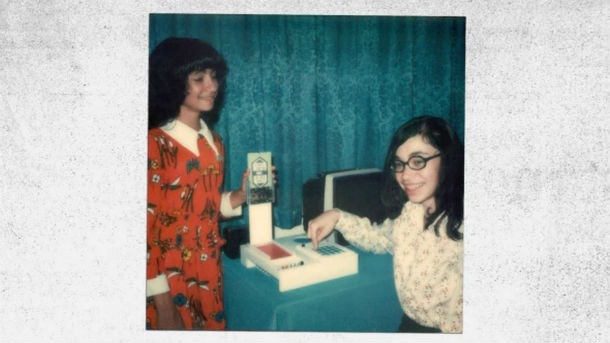Please support Game Informer. Print magazine subscriptions are less than $2 per issue
Discover The Lost History Behind The First Female Game Designer

Joyce Weisbecker (right) with her sister Jean, showing off a prototype of their father's computer
For every famous figure – a Steve Jobs or a Thomas Edison – there's often a forgotten name that contributed as much (or more) to their industry. Joyce Weisbecker, the first female and indie game designer, is one of those people.
Co.Design's Benj Edwards traces Weisbecker's short-lived but important work as a video game designer in an in-depth, fascinating look at the early days of the home video game console.
Joyce's story started with her father, Joseph Weisbecker, who worked at electronics giant RCA and introduced Joyce to the world of puzzles, games, and eventually programming. It was her father's work at RCA, his attempts to push RCA into the video game market, that got Joyce involved with game design in a meaningful way. In 1976, after just graduating from high school, Joyce found herself designing simple quiz games and two-player racing games for RCA's first and only home video game console, the Studio II, as a contract worker. Previously it had been thought that Carol Shaw was the first female game designer, but Joyce's work at RCA predates Carol Shaw's work at Atari by two years.
TV Schoolhouse I, a two player quiz game, was the first game Joyce got paid to program and design for RCA – she got paid $250 for her work. The quiz game even included a question on women's achievements. Soon after that she designed Speedway and Tag, two competitive games. Her work as a contract programmer and designer makes her the first independent game designer, a distinction that Joyce prefers over the label "first female game designer."
Unfortunately, RCA's console would be eclipsed by Atari's VCS and Magnavox's Odyssey, making it a massive failure for RCA's home entertainment division. However, Joyce's work remains historically significant and a landmark moment in the history of video games.
You can find the whole story here. It's fascinating and definitely worth a read, as it delves deep into the early history of video games as well as the technical struggles that early game developers faced.
[Source: Co.Design]










